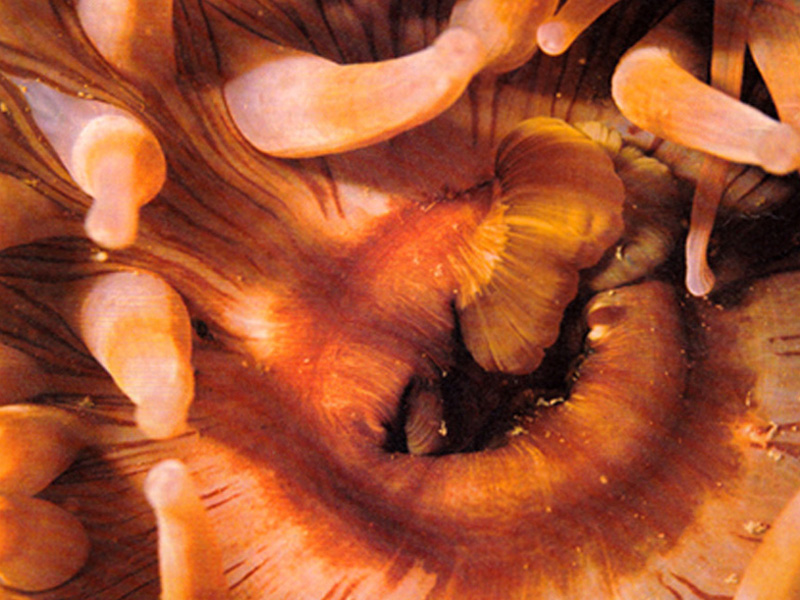A hypothetical back-story
A long time ago humans lost interest in having cognitive faculty and considered alternative states of being.
They saw the remarkable starfish, whose evolutionary agenda had included replacing the brain and spinal cord with nervous tissue. The humans wanted to inhabit a purely sensual world and retain only the carnal parts of their anatomy. By becoming starfish they abandoned themselves to their senses. Strangely, they did not retain the face.

Becoming Starfish was the first piece of interactive art by Genetic Moo. It was shown in the Bargehouse in 2008 after having been developed as part of an MA in Electronic Arts by Nicola Schauerman 2004-2006. Prior to this Schauerman had come up with a photographic version of the Starfish called So Desirable. This overtly sexual image had a number of interesting responses when exhibited at the Foundry in 2004 including one young man who ran into the space, took a photo, and then ran out again. These responses encouraged further development – how could the Starfish be brought to life through animation, interaction and computer coding? Schauerman enrolled on a part time MA at the John Lansdown Centre, Middlesex and began exploring the piece thematically and technically.
The initial inspiration was from a New Scientist article (Once we were worms 2nd Aug 2003). This explained that both humans and starfish were part of a group called deuterostomes. In both species the fertilised egg forms into a tiny ball of cells and then one end of the ball folds in on itself to form an anus. Another opening, on the other side, must be created for the mouth – hence deuterostome or ‘second mouth’. This early symmetry results in a head and a tail as well as a back and a belly. These body commonalities between such divergent species led to novel thoughts – what would be the result of a virtual crossbreeding between human and starfish?
Interactive creatures encountered as projections in a darkened gallery space. These artificial life forms will be constructed to react to stimuli provided by the audience. The first creature will combine elements of the human body in a starfish form. Motion requires the bending and flexing of human joints, limbs and digits in unnatural monstrous ways.
Crucially the article went on to describe how in evolutionary history the starfish ‘…almost certainly had an advanced nervous system with a brain and nerve cord. They threw this away and replaced it with a diffuse net of nervous tissues’ – which starfish have retained to this day.

Becoming Starfish itself presents a re-sensualising of the human body – its proliferation of sexual organs transforming desire into form. It offers a future imagined evolution away from the cerebral to the sensual. In addition by making the creature interactive new layers of meaning are unfurled. The creature seems to respond to engagement, gliding towards nearby humans and will mimic some movements but then could lose interest. It can change colour, pulsate, roll up into a ball, stretch, shudder and freeze – a repertoire of behaviour. People would stroke it, others would frighten it, dance with it. No instructions were given and it brought out a range of responses. It was like meeting an unknown species or alien life form. It was an interactive piece about interaction. How do you address the unknown? How close do you get, are you open or closed, is it friend or foe? How people reacted was driven by their senses – sight, touch, sound. There were no right or wrong engagements – you got out as much as you put in but user inactivity would result in the Starfish becoming bored and drifting away. The piece was responding to you. You are responding to the piece – you are in the piece – you are the piece.
As you interact with the starfish a bond is formed between two separate species; one human – one alien, one real – one virtual, one clothed – one flesh, one from the present – one from the future, one leading – one following, but which way round? The interaction goes back and forth – not fixed but a fluid conversation between art and audience, starfish and human. A becoming.
